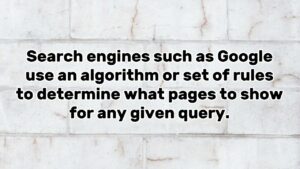
As a startup founder in the martech industry, I’m routinely asked by other founders what should be in their marketing stack. It was also a topic of discussion during a birds-of-a-feather session at the MarTech Conference. It would be nice to respond with “acquire these ten products, and then you’ll be all set,” but unfortunately, that’s not how marketing works. Many factors impact product selection: marketing objectives, budget, composition and skills of the marketing team, and the market and competitive environment.
Startups are very different from established companies from a marketing perspective. They have no established brand position, limited personnel and little to no budget for technology. They may be entering uncharted territory by defining a new market category or jumping into an already crowded space with well-established competitors. So, where to begin?
Get the daily newsletter digital marketers rely on.
Marketing objectives
You can’t be successful in building your tech stack without first creating well-defined marketing objectives. You should have 3-5 high-level achievable objectives for the year (no more, or you’ll drive yourself insane). They should be aligned with the company’s business objectives and current position in the market (don’t set an objective for market leadership when you have no product or no revenue – it’s not achievable nor believable).
Here are some guidelines.
If you are entering an already established market category, your first objective should be related to positioning and differentiating the company and creating brand awareness. Creating a new market category should be about market education and socializing the new category. Do not create a new category if you don’t have to. I’ve done it twice under duress, and it requires a huge investment in market education and hard work to ensure that there is a line item for your product in your customer’s budget. In addition, if you define a new category and remain the only company in that category it is not a category. It is just a marketing description.
Your second objective should be related to the most important thing you need to do in the coming year, e.g., drive leads, revenue, launch a product, etc. You can customize your objectives to support your particular goals. As you write your objectives, you should identify the metrics that will define success for each objective so that you can quantify what you are trying to achieve.
Technology requirements
When you are clear on your objectives, you can then define how you will achieve those objectives in a marketing plan. Content marketing will be a large component of your marketing plan for most startups because it is cost-effective and impactful. With your marketing plan in hand, it becomes straightforward to build a technology plan. You need to look at each component of your marketing plan and define where you need technology to support each component and what you need the technology to do.
Experienced marketing operations professionals will be the first to tell you to start by defining what the technology needs to do before determining what type of technology you need. Don’t start with a technology shopping list, e.g., CRM, email platform, analytics, etc. Even though you may instinctively know that you need a CRM system to satisfy a need to manage contacts, to select the right one for your environment you need a clear definition of what it needs to be able to do for you. Continuing with CRM as an example – besides managing contacts, do you need it to send emails individually and to lists? Do you need it to create a pipeline structure in a specific way? What sort of reports do you need to generate? Does it need to give you the ability to create landing pages? With a comprehensive list of needs in hand, you can identify the types of technology required in your stack, and in many cases, you may find that one type of technology addresses multiple needs.
Cheatsheet
It’s important to do the work noted above, but as a starting point, I can confidently say you’ll most likely need the following components in your stack:
- Source of lead data.
- CRM to manage contacts.
- Email platform or marketing automation system (note: some CRMs will provide you with enough of this capability to get you started).
- A variety of content creation and management tools.
- An analytics platform (could be as simple as Google Analytics).
- A social media management platform.
- Productivity and collaboration tools.
The work defining functional needs will be vital in selecting the right vendor for each of these categories. As you think about functional requirements, don’t forget to think about which pieces of your stack will need to integrate with one another frequently, which will dictate your vendor options.
Choosing the technology that’s right for you
Once you’ve determined the type of technology you need in your stack, two critical factors in choosing the right vendors for your environment are cost and skills. Most startups are budget constrained, and marketing technology frequently follows programs and people when it comes to the budget. That’s the bad news; the good news is that numerous excellent products are free, cost very little or offer significant discounts to startups, so you should get what you need within your budget constraints. And, remember you are not selecting technology that will be in place forever. As a startup, get what you need for the immediate future.
By nature, startups move fast, and startup employees generally perform multiple functions. Your team members must become “jacks of all trades,” leaving little time to master complex tools. Finding tools that are easy to implement and use is critical. Not every tool will be intuitive, and your team may need some new skills to leverage them properly. Invest in training. There are free programs and webinars as well as courses that charge for participating. You’ll get a great return by empowering your team to keep learning.
What next?
If you follow the guidelines above, you’ll have no trouble building your initial stack, and you’ll establish good discipline around technology selection at the same time, which will serve you well in the future. However, recognizing that some of you are under a lot of pressure and want to know what to put in your stack, I’ll share two things:
1) My company’s martech stack, which is continually evolving as we test and try new things.
2) The most popular tools in use by businesses with less than 100 people, which we’ve extracted from the aggregated data on our stack management platform:


Opinions expressed in this article are those of the guest author and not necessarily MarTech. Staff authors are listed here.





